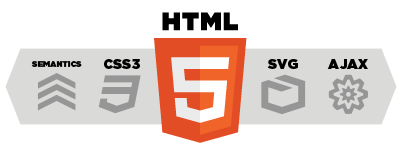Today most of the browsers and mobile devices support Geolocation API. The geolocation APIs work with a new property of the global navigator object ie. Geolocation object which can be created as follows:
var geolocation = navigator.geolocation;
The geolocation object is a service object that allows widgets to retrieve information about the geographic location of the device.
Geolocation Methods:
The geolocation object provides the following methods:
| Method | Description |
|---|---|
| getCurrentPosition() | This method retrieves the current geographic location of the user. |
| watchPosition() | This method retrieves periodic updates about the current geographic location of the device. |
| clearWatch() | This method cancels an ongoing watchPosition call. |
Example:
Following is a sample code to use any of the above method:
function getLocation() {
var geolocation = navigator.geolocation;
geolocation.getCurrentPosition(showLocation, errorHandler);
}
Here showLocation and errorHandler are callback methods which would be used to get actual position as explained in next section and to handle errors if there is any.
Location Properties:
Geolocation methods getCurrentPosition() and getPositionUsingMethodName() specify the callback method that retrieves the location information. These methods are called asynchronously with an object Position which stores the complete location information.
The Position object specifies the current geographic location of the device. The location is expressed as a set of geographic coordinates together with information about heading and speed.
The following table describes the properties of the Position object. For the optional properties if the system cannot provide a value, the value of the property is set to null.
| Property | Type | Description |
|---|---|---|
| coords | objects | Specifies the geographic location of the device. The location is expressed as a set of geographic coordinates together with information about heading and speed. |
| coords.latitude | Number | Specifies the latitude estimate in decimal degrees. The value range is [-90.00, +90.00]. |
| coords.longitude | Number | Specifies the longitude estimate in decimal degrees. The value range is [-180.00, +180.00]. |
| coords.altitude | Number | [Optional] Specifies the altitude estimate in meters above the WGS 84 ellipsoid. |
| coords.accuracy | Number | [Optional] Specifies the accuracy of the latitude and longitude estimates in meters. |
| coords.altitudeAccuracy | Number | [Optional] Specifies the accuracy of the altitude estimate in meters. |
| coords.heading | Number | [Optional] Specifies the device's current direction of movement in degrees counting clockwise relative to true north. |
| coords.speed | Number | [Optional] Specifies the device's current ground speed in meters per second. |
| timestamp | date | Specifies the time when the location information was retrieved and the Position object created. |
Example:
Following is a sample code which makes use of Position object. Here showLocation method is a callback method:
function showLocation( position ) {
var latitude = position.coords.latitude;
var longitude = position.coords.longitude;
...
}
Handling Errors
Geolocation is complicated, and it is very much required to catch any error and handle it gracefully.
The geolocations methods getCurrentPosition() and watchPosition() make use of an error handler callback method which gives PositionError object. This object has following two properties:
| Property | Type | Description |
|---|---|---|
| code | Number | Contains a numeric code for the error. |
| message | String | Contains a human-readable description of the error. |
The following table describes the possible error codes returned in the PositionError object.
| Code | Constant | Description |
|---|---|---|
| 0 | UNKNOWN_ERROR | The method failed to retrieve the location of the device due to an unknown error. |
| 1 | PERMISSION_DENIED | The method failed to retrieve the location of the device because the application does not have permission to use the Location Service. |
| 2 | POSITION_UNAVAILABLE | The location of the device could not be determined. |
| 3 | TIMEOUT | The method was unable to retrieve the location information within the specified maximum timeout interval. |
Example:
Following is a sample code which makes use of PositionError object. Here errorHandler method is a callback method:
function errorHandler( err ) {
if (err.code == 1) {
// access is denied
}
...
}
Position Options:
Following is the actual syntax of getCurrentPosition() method:
getCurrentPosition(callback, ErrorCallback, options)
Here third argument is the PositionOptions object which specifies a set of options for retrieving the geographic location of the device.
Following are the options which can be specified as third argument:
| Property | Type | Description |
|---|---|---|
| enableHighAccuracy | Boolean | Specifies whether the widget wants to receive the most accurate location estimate possible. By default this is false. |
| timeout | Number | The timeout property is the number of milliseconds your web application is willing to wait for a position. |
| maximumAge | Number | Specifies the expiry time in milliseconds for cached location information. |
Example:
Following is a sample code which shows how to use above mentioned methods:
function getLocation() {
var geolocation = navigator.geolocation;
geolocation.getCurrentPosition(showLocation, errorHandler,
{maximumAge: 75000});
}
-
Average:5
-
Lectures(2830)
-
Trackback(0)
-
Permalien





















Commentaires (0)